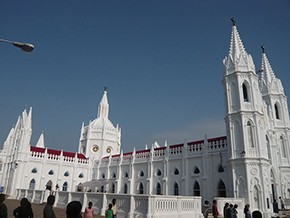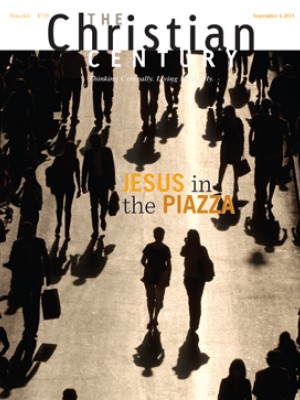Two faiths, one shrine

The Syrian city of Saidnaya is a place of ancient holiness. Reputedly the Virgin Mary appeared to the Emperor Justinian in the sixth century requesting not only that a church be built there in her honor but also supplying a detailed architectural plan. Saidnaya remains highly popular with pilgrims—with Christians, of course, but also with many Muslims who come on Fridays to pay their respects to the Virgin. Believers of both kinds come for healing, women usually in quest of healthy pregnancies.
Such dual use might puzzle American or European Christians. Surely, we think, shrines are sacred to particular faiths—Lourdes for Catholics, Mecca (very strictly) for Muslims. But that exclusive attitude reflects Europe’s distinctive religious history, in which Christianity was for centuries the only religion in the landscape, or at least an overwhelming majority force.
Read our latest issue or browse back issues.
In the rest of the world, religions have rarely enjoyed such a monopoly and have commonly shared sacred space. In India and Pakistan, Muslims and Hindus are both to be found at the shrines of the great Sufi sheikhs. One of India’s most beloved shrines today is the (Catholic) Basilica of Our Lady of Good Health at Vailankanni, which attracts pilgrims of all faiths, some two million a year. It would be downright rude to inquire into the religious credentials of a fellow pilgrim.
Such overlap is also common in the Middle East and the Balkans, where Sufi and Christian shrines both attract a wide clientele. A hundred years ago, a baffled American traveler noted how “Christians, Moslems, Jews and Nuseiriyeh [Alawites] visit each others’ shrines. The Moslems take their insane, or ‘possessed,’ to get rid of their evil spirits in the cave of Saint Anthony, belonging to the Maronite convent of Qozhayya in the Lebanon. Christians go on a similar errand to the well at the shrine of Sheikh Hassan-er-Rai (the Shepherd) near Damascus.”
If that traffic has declined in more recent times, holy places still draw followers from multiple faiths. Even today, Muslim and Christian Palestinians converge on the Orthodox monastery of St. George at al-Khader. They pay homage to a powerful figure known to Christians as St. George and to Muslims as al-Khidr, “the Green One,” a Qur’anic saint. Through much of the Middle East, St. George’s Day is still a common occasion for Muslims and Christians alike to visit the old places.
Such common devotion has deep historical roots. It recalls earlier eras when places of worship changed hands from time to time, but the people following the older faith continued paying their devotions at the places where their ancestors had worshiped. At a given site, a church might stand on the site of an older mosque, which in turn had been built over a church, which replaced a pagan temple. The names changed, but the sanctity remained.
So also did the needs. If a single thread runs through all these different local cults, it is the need for healing, from ailments of mind, body and spirit.
To describe such shared experiences of worship and pilgrimage need not mean romanticizing interfaith relations in bygone days. Communities that prayed together on some occasions might find themselves in armed conflict at other times, with whole groups slaughtered or purged. But strictly religious or theological divisions were marginal in such struggles, compared to ethnic and tribal pressures.
One of the great unwritten religious stories of the past century has been the progressive assault on this religious cooperation, this convivencia, as religious groups have become more separate over time and particular countries more homogeneous. In the Middle East, Jewish populations shrank to the vanishing point outside Israel, while Christian numbers have declined precipitously in Palestine and Iraq. These days, we no longer find the richly mixed populations of past eras.
Religious extremists target places where believers mingle with infidels, however they define that ugly term. Rigid Islamic puritans condemn Sufi shrines, which they see as promoting a kind of paganism. In recent years, Islamist terrorists have repeatedly and bloodily attacked Sufi holy places, most gruesomely in Pakistan and Iraq. When Islamist forces held power briefly in Mali last year, they bulldozed precious Sufi tombs and shrines.
The free sharing of holy places in the Middle East has survived in only a few countries, namely Egypt, Syria and Lebanon, and in none of those cases can religious coexistence be taken for granted in future.
Recently, the Syrian bishop Luke lamented the ruinous violence that the civil war had inflicted on Christian minorities in his country. Hundreds of thousands have been subjected to ethnic or religious cleansing, with massacres and mass rapes. Perhaps, he warned, Christianity itself might cease to exist in that land. Luke is the bishop of Saidnaya, which was for so long a peaceful meeting place of faiths.






